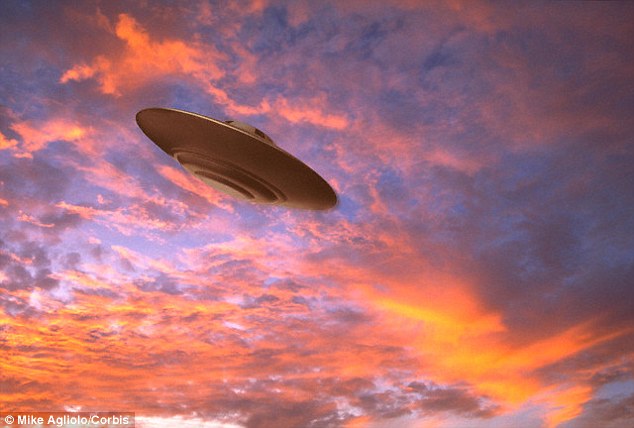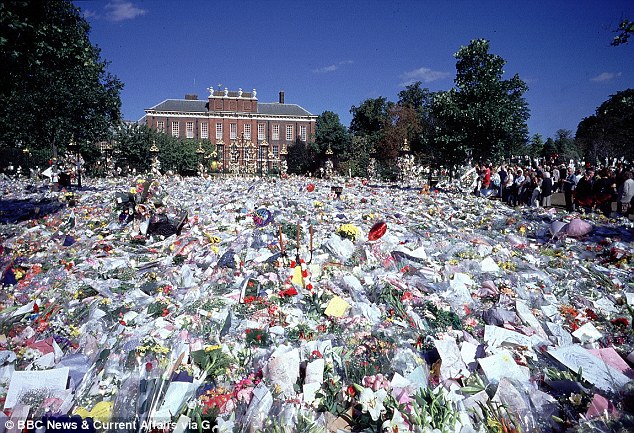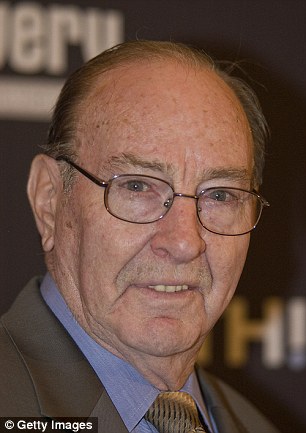People are no less likely to believe something just because it has been called a conspiracy theory.
Calling a story silly and paranoid does not make people dismiss it out of hand as one might expect, a study has found.
In fact, the ‘romanticised image’ of conspiracy theories on TV shows such as The X-Files has made them as believable as facts, experts claim.

Calling a story a silly and paranoid conspiracy theory does not make people dismiss it out of hand as one might expect, a study has found. A stock image of a UFO is shown
The study suggests there is a good reason for longevity of supposed plots about everything from UFOs to the death of Princess Diana – we find them so attractive that we ignore the holes in their arguments.
The researchers from Winchester University asked 802 American participants to read what they called a ‘short mock news article about a fictitious political scandal in Canada’.
In some cases the article was given the headline: ‘Conspiracy Theories Emerge in Wake of Canadian Election Result’.
Other times it was headlined: ‘Corruption Allegations Emerge in Wake of Canadian Election Result’.
Canada was chosen because the thinking was that Americans do not know much about Canadian politics so would have to decide on the article’s merits alone.

The study suggests there is a good reason for longevity of supposed plots about everything from UFOs to the death of Princess Diana – we find them so attractive that we ignore the holes in their arguments
BUT CONSPIRACY THEORISTS CAN BE VIEWED NEGATIVELY
Dr Wood wrote: ‘While conspiracy theories might not be viewed very negatively, it is possible that conspiracy theorists are viewed quite negatively.
‘Unlike the conspiracies they believe in, conspiracy theorists do not often enjoy a positive or romanticised portrayal in popular media: their fictional counterparts are generally unbalanced, paranoid, dogmatic, and antisocial’.
The results showed there was ‘no evidence of a negative effect of calling something a conspiracy theory’ on its believability.
Psychologist Dr Michael Wood, the lead author of the study, said that the results were surprising.
He sought to explain it by saying that the test participants may be so cynical about politics that their reaction might be: ‘This isn’t really a conspiracy theory; it’s just politics as usual’.
Another reason was that the conspiracy theory label may have ‘lost some of its power’ and been ‘diluted’ so that it encompasses general speculation about intrigue.
Other people may be just ‘sympathetic to the idea of conspiracies in general’.
Dr Wood wrote: ‘Conspiracy theories are a common topic in popular media: Many films, video games, and television shows feature the protagonists fighting against shadowy conspiracies of frightening reach and power.

The results showed there was ‘no evidence of a negative effect of calling something a conspiracy theory’ on its believability. A stock image of a memorial plaque outside The Sixth Floor Museum at Dealey Plaza In Dallas is shown. The word ‘allegedly’ has been highlighted by scratches on the plaque
‘Conspiracy theories have a kind of romanticism to them; they often take a utopian, Manichean view of the world, where humanity lives in a natural state of peace and harmony that was disrupted only by the conspirators’ sinister meddling.
‘Despite their perceived lack of intellectual rigor, conspiracy theories are nevertheless attractive – perhaps attractive enough that the label prompts ambivalence rather than scorn when applied to an ambiguous event.’
Dr Wood did however have a warning for conspiracy theorists themselves.
In the study he wrote: ‘While conspiracy theories might not be viewed very negatively, it is possible that conspiracy theorists are viewed quite negatively.
‘Unlike the conspiracies they believe in, conspiracy theorists do not often enjoy a positive or romanticised portrayal in popular media: their fictional counterparts are generally unbalanced, paranoid, dogmatic, and antisocial’.
‘ALIENS STOPPED NUCLEAR WAR ON EARTH’ SAYS FORMER ASTRONAUT
Aliens came to Earth to stop a nuclear war between America and Russia, according the bizarre claim of a former astronaut.
Edgar Mitchell, the sixth man to walk on the moon, says high-ranking military officials witnessed alien ships during weapons tests throughout the 1940s.
The UFOs, he says, were spotted hovering over the world’s first nuclear weapons test which took place on July 16, 1945 in the desolate White Sands deserts of New Mexico.
The Nasa veteran has regularly spoken about his belief in aliens ever since he landed on the surface of the moon during the Apollo 14 mission in 1971.


Edgar Mitchell (left), the sixth man to walk on the moon, says high-ranking military sources witness alien ships hovering during weapons tests. The UFOs, he says, were seen during the world’s first nuclear weapons test which took place on July 16, 1945 in the desolate White Sands deserts of New Mexico
‘White Sands was a testing ground for atomic weapons – and that’s what the extra-terrestrials were interested in,’ the 84-year-old Texan told Mirror Online.
‘They wanted to know about our military capabilities.
‘My own experience talking to people has made it clear the ETs had been attempting to keep us from going to war and help create peace on Earth.’
Dr Mitchell says stories from people who manned missile bases during the 20th Century back up his claims.
‘Other officers from bases on the Pacific coast told me their [test] missiles were frequently shot down by alien spacecraft,’ he said.
He previously said supposedly real-life ET’s were similar to the traditional image of a small frame, large eyes and head.
He claimed our technology is ‘not nearly as sophisticated’ as theirs and ‘had they been hostile’, he warned ‘we would be been gone by now’.








